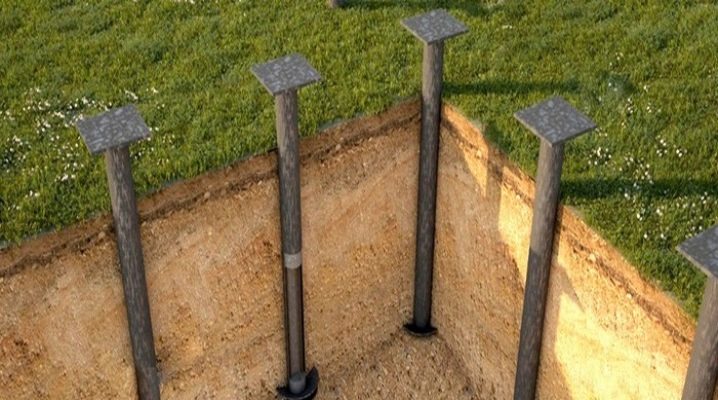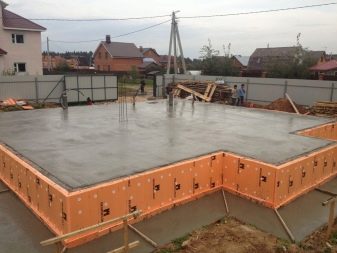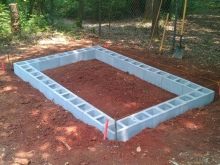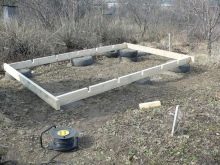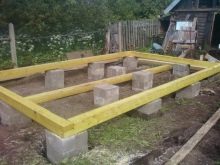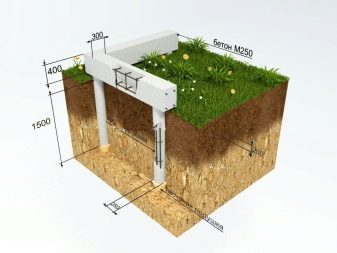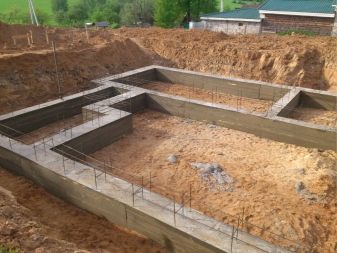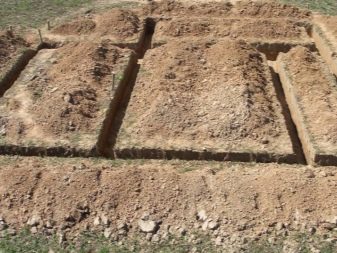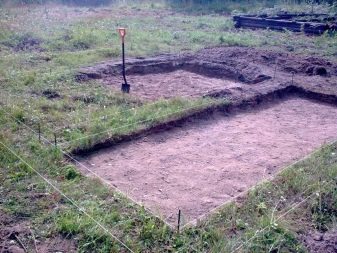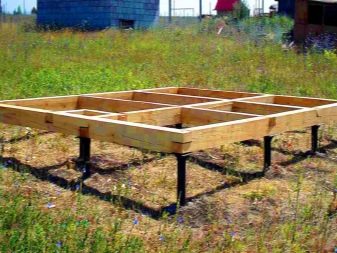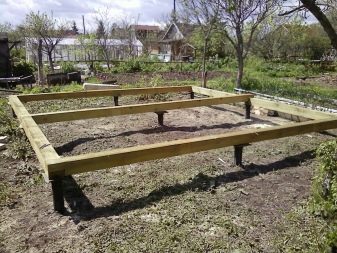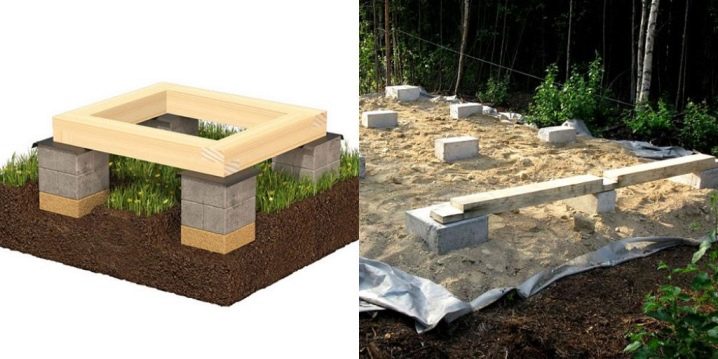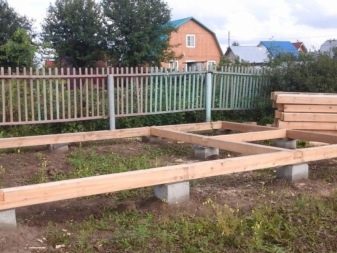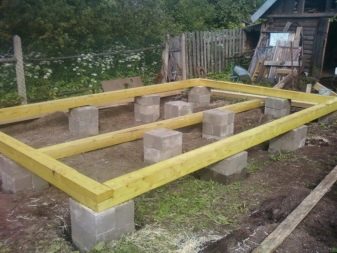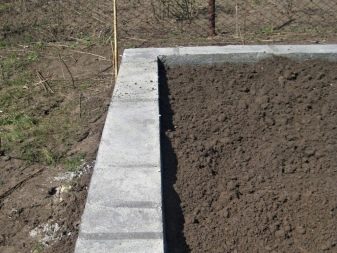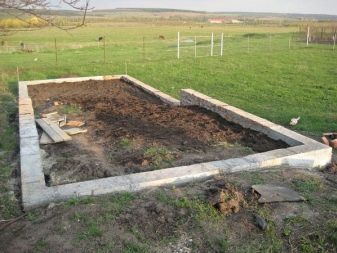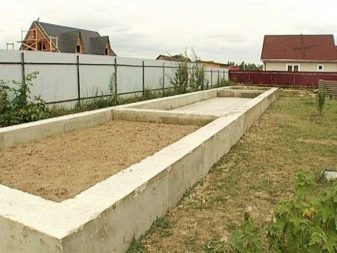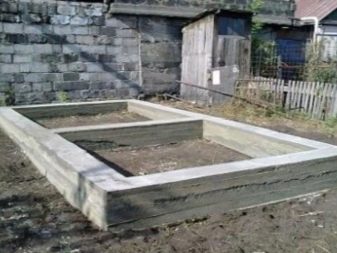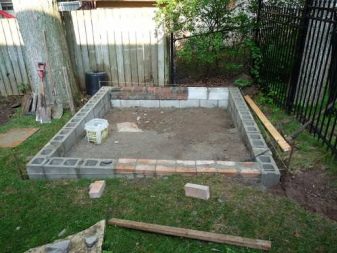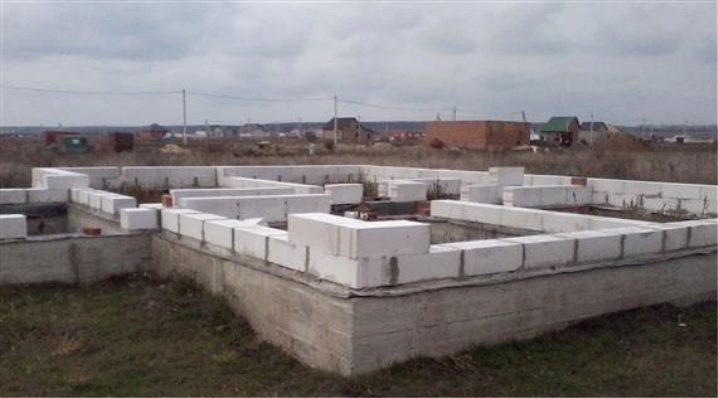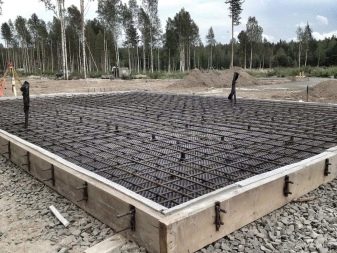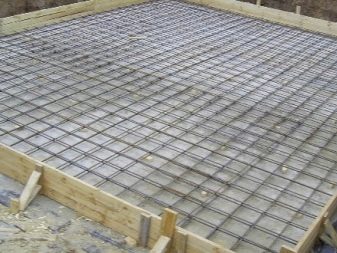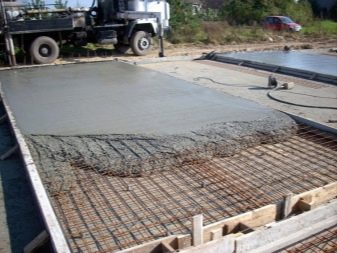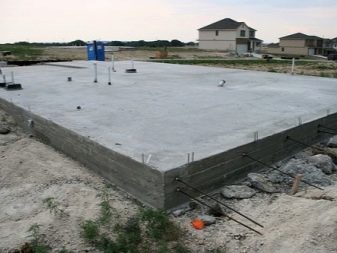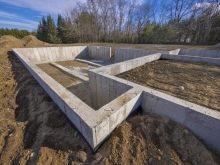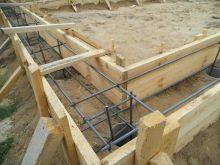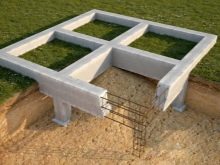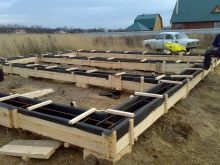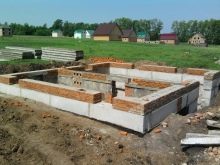The foundation for the barn: which one is better to choose and how to do?
The foundation is needed not only for houses and cottages, but also for outbuildings, which include sheds. Such structures are often built on a solid foundation. With this addition, the buildings become taller and stronger. It is worth figuring out which foundation is more suitable for a shed and how to install it yourself.
Features of the choice of base
Today, there are several varieties of foundation bases. Each of them has its positive and negative sides. For the barn you need to pick up the foundation as carefully as for the main structures on the site.
To stay on one option, you should rely on the characteristics of the soil.
- For a loose, sandy soil, one serious problem is characteristic: after melting of snow or heavy precipitation, such soil becomes saturated with moisture. This can lead to the fact that he simply "floats." In these conditions, professionals advise to build a monolithic or tape base.
- As for clayey soil, then it must be borne in mind that it is subject to freezing at a considerable depth. Under such conditions, quicksands are also formed. For such a soil more suitable pile foundation.
- The negative sides of the frozen soil and quicksand are unfamiliar to gravel soil. In such circumstances, it is possible to safely mount the column foundation.
- There is also a special rocky type of soil. On it you can build any kind of foundation. The only exceptions are screw bases.
In order to choose the optimal type of foundation, it is important to consider the relief of the soil, as well as the level of groundwater. To find out all the necessary information about the site, you should contact the experts. However, it is worth considering that such geological surveys can be quite expensive, so most homeowners rely on the experience and advice of neighbors.There is a way to self-study the soil to select the optimal foundation. To do this, a test screw screw is done. At the same time, this part goes deep into the ground by hand, so that it is possible to determine the level of groundwater, as well as the depth of the bearing layer by the moment of the screed.
Preparatory work
Before proceeding to the construction of the foundation under the shed, you must carefully prepare the site in the place where the outbuilding will be located.
At this stage, the following work should be done:
- you need to properly level the place where the foundation will stand with the barn;
- remove from the ground all the excess: hemp, knots, dirt, trees, bushes and other similar objects.
After clearing the ground for each type of foundation their work is carried out. For example, a large pit is dug for a monolithic base, and for a linear foundation it is necessary to prepare a trench. If the land has too uneven ground or soil with a large slope, then it will not be so easy to level it. In this case, experts recommend installing foundation structures on piles.
Subtleties of manufacture
The foundation under the barn can be made by hand. It is necessary to consider in more detail a few simple instructions with a step-by-step description of the installation of the foundations for this outbuilding.
Screw
Screw bases are erected as follows:
- First, along the perimeter of the walls you need to put markup for screw piles;
- then you need to dig up small grooves, between them should be left about 1.5-2 m; it is necessary to put piles in the prepared pits, which should be located at the corners; if the structure has internal partitions, then the piles need to be fixed along the line of their construction.
- If you plan to lay a floor of boards in a shed, then you need to put piles of logs under the bars;
- it is necessary to screw in large piles that have a diameter of more than 100 mm and a length of more than 150 mm, it should be borne in mind that such installation work is carried out with special equipment;
- piles with more modest dimensions are screwed into the soil by hand using levers, and care must be taken to ensure that the foundation structures are in an even vertical position;
- fixed piles need to be cut in height, it is recommended to use a bubble or laser level;
- in the pipes you need to pour the cement composition;
- the top of the pile must be attached head; in one structure the foundation is assembled by a channel welded around the perimeter or an I-beam.
Columnar
To build a similar basis for a farm building, You may need the following materials:
- concrete mortar, which will need to be poured into the formwork;
- metal or asbestos pipes with reinforcement, filled with a solution of concrete;
- brickwork;
- bout;
- blocks of concrete.
The foundation with support columns for the shed is constructed in a different way than the screw one, and includes the following steps:
- in order to establish supports, it is necessary to dig holes, of suitable depth, based on the markings made before;
- the gap between the support parts should be left in the range from 1.5 to 2 m;
- the depth of the foundation structure for the outhouse should be at least 150 mm below the freezing point of the soil;
- at the bottom of the pits, you need to sprinkle large gravel (about 100 mm), in addition, pour the same amount of sand; these materials should be compacted, and then lay the roofing felt on top;
- supports should be placed on the same level, they should be located above the ground at about 150-200 mm;
- on top of the supports you need to put a few layers of waterproofing;
- pillars must be surrounded by a pavement so that the soil is not washed out.
Tape
Ribbon foundation types are the most popular because they are inexpensive, easily withstand impressive loads and are versatile.
To prepare a similar shed base, the following steps should be followed:
- digging a trench along the perimeter of the outbuilding, which is 200–300 mm deep below the ground freezing level;
- the trench width indicator depends on the size of the base; free space should be allocated for the installation of formwork;
- it is necessary to equip a cushion of crushed stone with a thickness of 100 mm, and then properly tamp it;
- on the bottom of the trench you need to pour sand and rammed too;
- now it is necessary to prepare a formwork with a top edge, towering 200–300 mm above the ground;
- the formwork must be strengthened with struts, with the upper extreme part being knocked down in transverse bars with a step of 1.5–2 m;
- inside the formwork on the walls you need to put roofing material or polyethylene;
- it is necessary to carry out reinforcement, for which steel rods with a diameter of 8–12 mm will be useful; the armature should be put and tied so that a lattice with cells of 40–50 mm is obtained;
- it is necessary to cast concrete; in order to get rid of air bubbles, reinforcement should be stuck into concrete several times over the entire surface of the casting;
- cover the setting concrete with plastic wrap and moisten it from time to time to prevent the material from cracking;
- after 28 days, when the concrete hardens to the end, the formwork must be removed and the trench backfilled with earth;
- two layers of waterproofing should be placed on the concrete fill.
According to home craftsmen, this foundation is quite simple. Its construction is not difficult.
From foam blocks
The foundation of blocks (foam or cinder blocks) is strong and reliable.
It is mounted in several stages, namely:
- first you need to make a plot of the site and dig trenches of the desired depth;
- the bottom of the trench needs to be leveled and tamped;
- the next step is to set up a cushion of gravel and sand;
- after that the blocks can be laid out in a trench; to do this, refer to the services of special lifting equipment;
- cement-sand mixture should be applied to the side walls;
- each next block row must be laid with a small offset by half the length of the previous one;
- in the space separating the rows, it is necessary to apply a solution of sand and cement;
- at least 1 row of foam blocks should be laid above the ground;
- bitumen mastic should be applied at the top and side with the use of rags and kvacha;
- Finally, the trench should be refilled with earth.
Monolithic
Reliable and sturdy is a monolithic base. It can be used on almost any soil. On such a basis, there will be a barn of any size for many years, from very small to large (for example, with dimensions of 6x4 m).
The technology of construction of this type of foundation includes the following steps:
- under the entire territory of the casting, it is necessary to dig a hole, while its depth should be only 0.5 m; after tamping, sand (200 mm) should be poured to the bottom, in addition, the sand should be slightly moistened and compacted;
- crushed stone is laid on the sandy layer (layer of 200 mm) and is also compacted;
- on the resulting sand and gravel cushion lay out the floor slabs and prepare for pouring, for this, formwork is collected and reinforcement is made; in this case, the cells in the lattice should be 20x20 m, then the formwork is poured with concrete;
- you need to expel air bubbles from the solution, which is done with a special vibropress;
- put a plastic layer on the frozen solution;
- formwork can be removed only after 28 days.
Useful tips
Experts recommend follow some tips when creating a foundation for a barn.
- Economic construction of a large area will require a sectional layout. In this case, the foundation is poured not only at the edges of the building, but also beneath it, so that the bottom of the shed does not subside over time, but simply lies on the concrete.
- Cement dries completely on average within 24–28 days, however, it is permissible to start the construction of an outbuilding earlier — in a few weeks, when the pouring strength is reached more than half.
- If a columnar structure is mounted on the heaving earth, then it should be taken into account that it should lie deeper than the freezing of the earth.
- If you want to save money, then instead of asbestos pipes and roofing felt, you can use simple car tires. In the conditions of a non-rocky soil, they do not need to be deepened much. The cavity of these items should be filled with sand, and then pour cement.
- Do not forget that the columnar foundation for the barn should be waterproofed and drained without fail.
- Experts recommend in advance to make the required calculations and measurements, as well as to prepare all the necessary indentations on the site. And also you need to decide on the number of pillars of the foundation. Otherwise, you may encounter serious problems. For example, in the midst of work, it may become clear that there are non-drip knots in the ground.
- Screw piles can be made slightly longer if necessary. To this end, the ends located at the top are supplemented with threads and grooves.
- It must be remembered that the heels do not affect the piles in any way, since their outer surfaces are treated with an anticorrosive agent. However, the structure at the same time receives an underground, the perimeter of which must be covered with decorative material, for example, siding, tiles or corrugated flooring. In order to ventilate the underground, the grout is equipped with ventilation products.
- The shed should be built immediately after the completion of works related to the foundation. Otherwise, swelling of the soil, which occurs in the spring, can slightly move the pillars from the initial point.
- For outbuildings, it is permissible to build combined varieties of foundation foundations, for example, a columnar foundation with a grillage.To make it, you need to fill shallow-tape foundation with notches designed for supporting parts located in the corners in 2-meter increments.
- Block foundations are made of different types of blocks. The most common designs of cinder blocks and foam blocks. If it is decided to make the basis of the first, then you need to know that such materials have a porous structure, which contributes to their rapid destruction under the action of moisture.
- Making the foundation with your own hands, you should rely on the instructions. Do not neglect any of the stages of work.
- When building the foundation for the outbuilding, you should not make any mistakes, as this may affect the reliability of the entire structure as a whole. If there are doubts in their abilities, then it is better to turn to professionals who, for a fee, will make a quality and strong foundation for any outbuilding.
On how to choose and how to make the foundation for the barn, see the following video.
